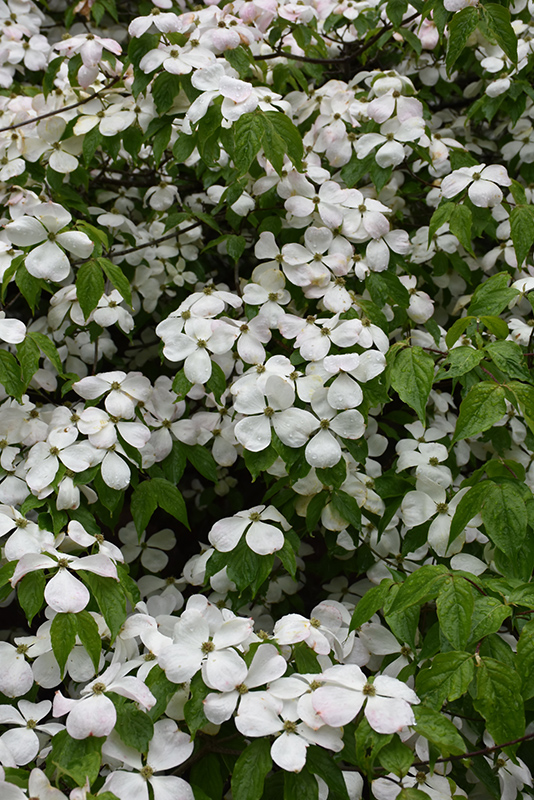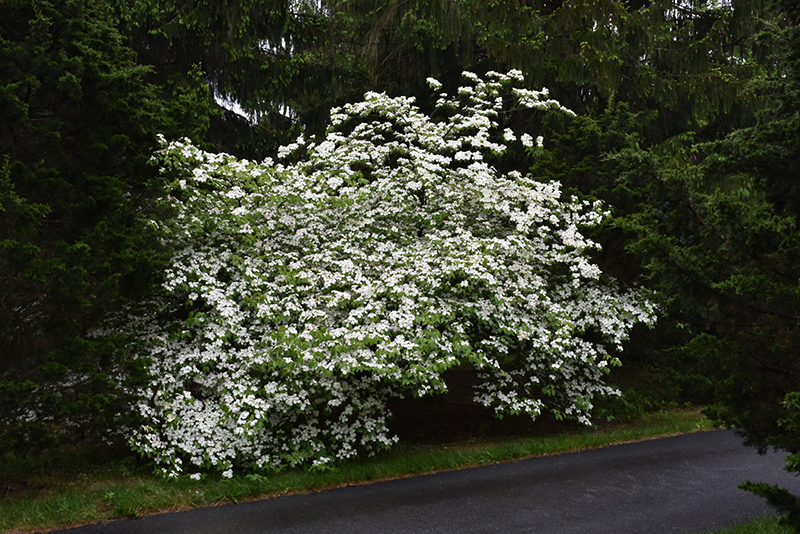Menu

Stardust Flowering Dogwood*
Cornus 'Stardust'

Stardust Flowering Dogwood flowers
Stardust Flowering Dogwood flowers
(Photo courtesy of NetPS Plant Finder)

Stardust Flowering Dogwood in bloom
Stardust Flowering Dogwood in bloom
(Photo courtesy of NetPS Plant Finder)
* This is a "special order" plant - contact store for details
Height: 15 feet
Spread: 20 feet
Sunlight:
![]()
![]()
Hardiness Zone: 6b
Group/Class: Rutgers Stellar Series
Description:
An impressive new hybrid which features snowy white blooms in spring on a distinctly low and horizontally wide-spreading shrub, resistant to disease and insects; very fussy, requires rich, well-drained acidic soil, best in a sheltered location
Ornamental Features
Stardust Flowering Dogwood is draped in stunning clusters of white flowers with white bracts held atop the branches in mid spring. It features an abundance of magnificent crimson berries from early to mid fall. It has dark green deciduous foliage which emerges burgundy in spring. The pointy leaves turn an outstanding brick red in the fall. The peeling gray bark and antique red branches are extremely showy and add significant winter interest.
Landscape Attributes
Stardust Flowering Dogwood is a dense multi-stemmed deciduous tree with a stunning habit of growth which features almost oriental horizontally-tiered branches. Its average texture blends into the landscape, but can be balanced by one or two finer or coarser trees or shrubs for an effective composition.
This is a relatively low maintenance tree, and should only be pruned after flowering to avoid removing any of the current season's flowers. It is a good choice for attracting birds to your yard. It has no significant negative characteristics.
Stardust Flowering Dogwood is recommended for the following landscape applications;
Planting & Growing
Stardust Flowering Dogwood will grow to be about 15 feet tall at maturity, with a spread of 20 feet. It has a low canopy, and is suitable for planting under power lines. It grows at a slow rate, and under ideal conditions can be expected to live for 40 years or more.
This tree does best in full sun to partial shade. It does best in average to evenly moist conditions, but will not tolerate standing water. It is very fussy about its soil conditions and must have rich, acidic soils to ensure success, and is subject to chlorosis (yellowing) of the foliage in alkaline soils. It is somewhat tolerant of urban pollution, and will benefit from being planted in a relatively sheltered location. Consider applying a thick mulch around the root zone in winter to protect it in exposed locations or colder microclimates. This particular variety is an interspecific hybrid.
This plant is not reliably hardy in our region, and certain restrictions may apply; contact the store for more information.
* This is a "special order" plant - contact store for details
A NetPS Plant Finder tool
